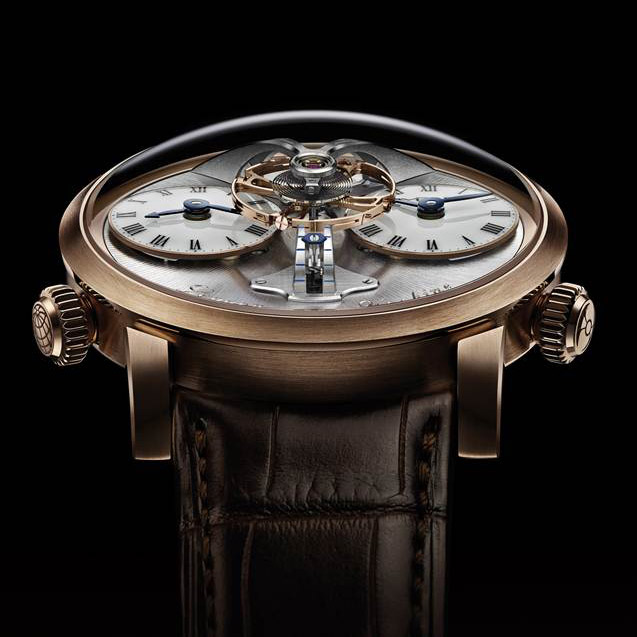MB&F Legacy Machine No. 2
Maximilian Büsser and his team tackle the dual regulator and celebrate creativity in watch making

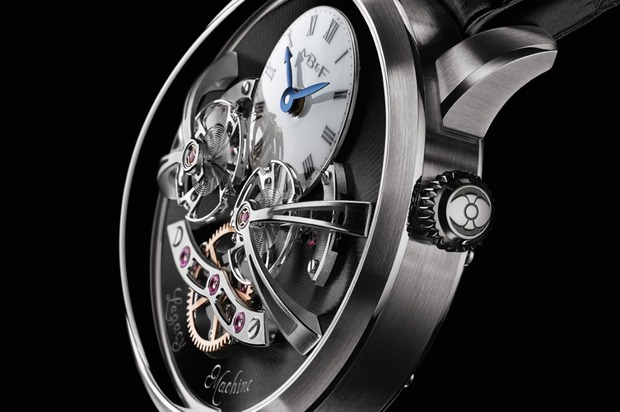
Max Büsser knows watches better than most but isn’t a trained watchmaker. He instead serves as a muse of sorts, the Johnny Knoxville of modern horology, tempting the friends he collaborates with to dare to dream as big as he does. The latest result of that inspiration, research and work is MB&F‘s (Maximilian Büsser & Friends) latest creation, the Legacy Machine No. 2.
Few companies consistently inspire us the way MB&F does. Releasing one or two products a year—historically wristwatches, with the exception of their recent MusicMachine—each represents innovation in design and engineering of the highest level. The Legacy Machine No. 1, which came out in the fall of 2011 pioneered many firsts in watchmaking. It was such a success that MB&F reunited its dream team of Jean-François Mojon from Chronode to develop the movement and Kari Voutilainen to design it. Their signatures can be seen on the back of that and the new watch movement as well.

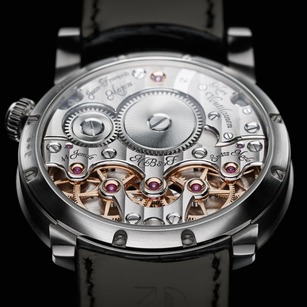
“If I were alive a hundred or more years ago, I wonder what kind of watches I’d be making?”
The Legacy Machine No. 2 (known as LM2), is the second in MB&F’s expected series of five Legacy watches. Each piece is an exercise in time travel, with founder Max Büsser posing the question, “If I were alive a hundred or more years ago, I wonder what kind of watches I’d be making?” Each is inspired from icons of watchmaking’s history—both timepieces and their creators—and seeks to challenge today’s generation of watchmakers by reimagining these antique timepieces in creating components and movements that most people would simply say cannot be done.
This was the inspiration, and the challenge, for the Legacy Machine No. 2. We asked Max where the idea came from. He said, “It comes from the first time I set eyes on Philippe Dufour’s Duality watch ten years ago. I remember being breath taken when I turned the simple watch around to discover the two balance wheels. From there we started the long process of trying to find where did the idea of two balance wheels come from, and the journey took us back 250 years!” Dufour’s work is thought to be the first time that two balance wheels were used in a wristwatch movement. He only made nine of them.
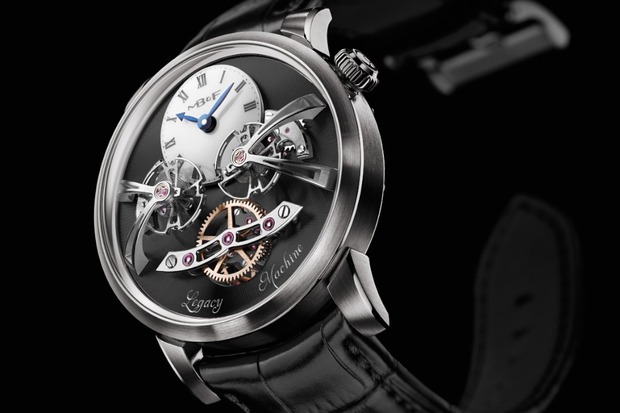
That research led the MB&F team to a few watchmakers, a group recognized as some of the best ever in the field: Abraham-Louis Breguet (1747– 1823), Ferdinand Berthoud (1727– 1807) and royal clockmaker Antide Janvier (1751– 1835). One thing these innovators had in common was their use, or attempted use, of dual regulators in a clock movement. All mechanical movements have a balance wheel, which lives in a component called a regulator. Its job is to regulate the watch or clock’s ability to keep time accurately, despite constant movement and change in angle. It then powers the gear train which makes the hands move. A complication known as a tourbillon is widely used today to address the issue. In the early 1800s, all three of these watchmakers experimented with the more-is-better approach, using two balance wheels to do the job. Easier said than done, this created an additional problem—how do you take those two different inputs and average them out? The regulators were connected to a differential, which takes the inputs, averages them, and then sends power to the gear train, in itself a hugely complex feat of engineering. Most of these efforts included an additional movement. That such a very few dual regulator movements were created by them, and so few since, (some students experimented with dual regulators in pocket watch movements in the 1960s), helps explain the complexity and challenge of the design.
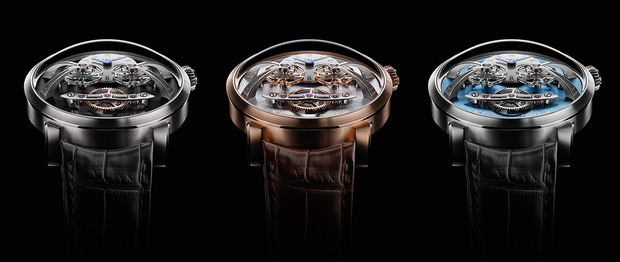
Upon seeing the first prototype of the LM2, Max says “I was as stunned as when I discovered the Duality. That is what I am looking for in a watchmaking creation: Generating a rush of adrenaline whilst mixing tribute to the great masters and personal creativity.”
The Legacy Machine 2 is available in 18k white or yellow gold, and in a limited edition of 18 in platinum with the blue dial.
Images courtesy of MB&F

